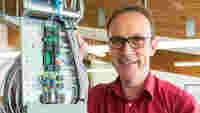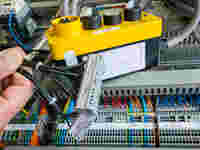Installation and Service Are Simpler
Renovation instead of vacancy: In the Rüttenscheid district of Essen, a former Hertie department store has yielded to a Neoclassical ensemble of buildings. The construction project, “RÜ62”, which recalls the bourgeois architectural traditions of Rüttenscheid, will, upon completion of construction at the end of 2012, blend harmoniously into the cityscape, and bring with it new retail trade. For Klaus-Peter Kapp, this is the type of project that allows Janzhoff Aufzüge GmbH to demonstrate exactly how capable they are. “We are especially good at constructing high-quality elevator systems that deviate from the large-scale industry standards,” states the CEO of the Dortmund company. “RÜ62” is an example of this. Janzhoff was engaged in a number of projects in relation to the “Ruhr 2010”, European Capital of Culture.
The functional and architectural conceptions of buildings and spaces have also been subject to considerations of increasing spatial efficiency, which makes building technology that can be more flexibly integrated more necessary than ever. Instead of constructing buildings around defined shafts, elevator systems are increasingly being integrated into the context of existing plans. “We are undergoing a change in our technologies, and, additionally, there is no longer space for a machine room. Since so much has changed in the installation of controls, we have to plan for all eventualities,” explains Thomas Kaifer, technical manager at Janzhoff. “The classic elevator had a shaft and a machine room above it. That's where the controller and drive were located. All was right with the world.”
Marking Accessories for Rail-Mount Terminal Blocks – Here’s How WAGO Supports You:
With TOPJOB® S, the entire electrical connection technology can be bundled into a space-saving unit
smartPRINTER prints marking strips and markers directly from the roll.
The flexible marking options post greater efficiency on many levels.

